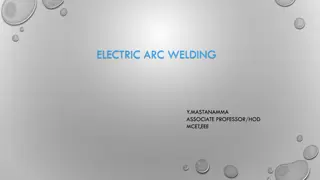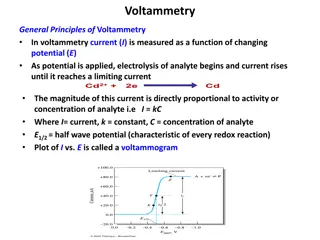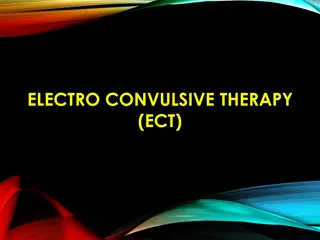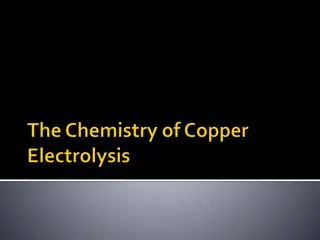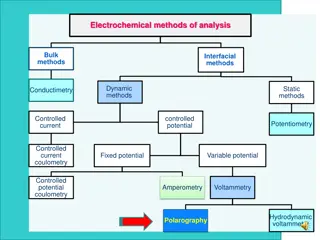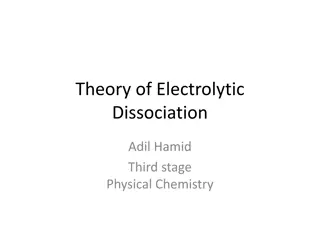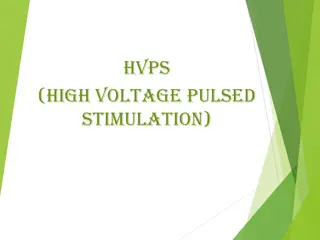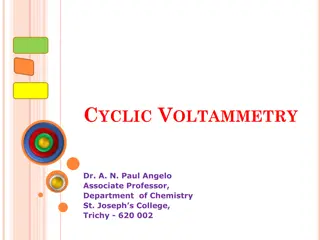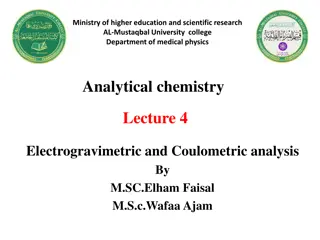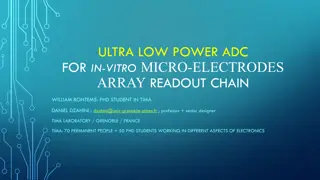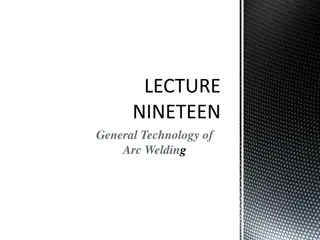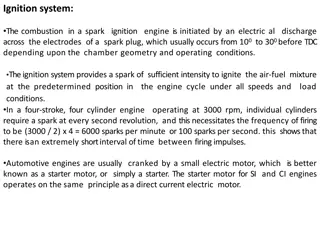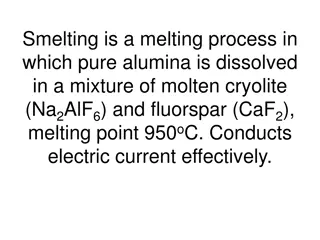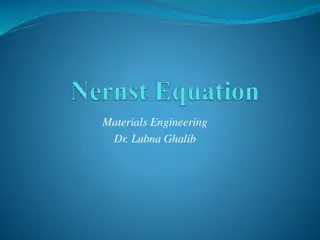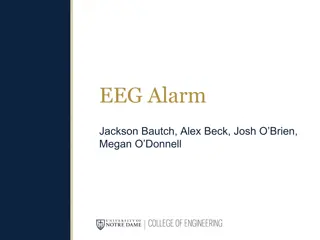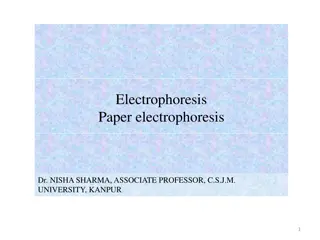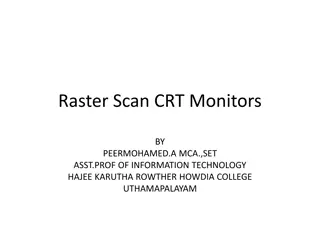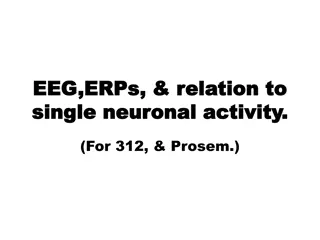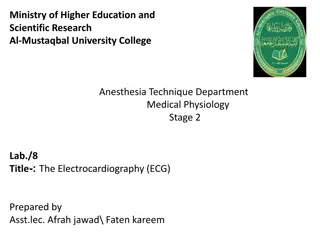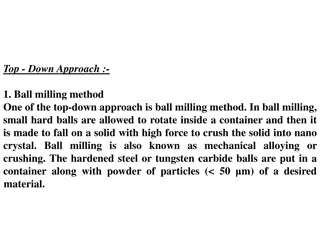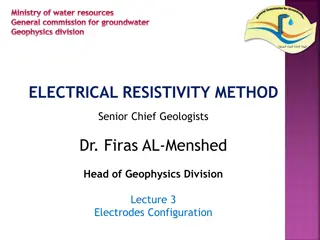SOLID COPPER EARTH ROD
Nexus Metal & Alloys is a leading manufacturer, exporter and supplier of Solid Copper Earth Rod, Solid Copper Bonded Rod, Solid Copper Earth Rod Lightning Protection Accessories, Pure Copper Bonded Rod, Electrolytic Copper Earth Rod, Solid copper rods, Solid Copper Earth Bars, Solid copper ground el
4 views • 3 slides
Basis of the M/EEG signal
This informative guide delves into the basics of M/EEG signal methods, covering topics such as the biophysical origin of M/EEG, historical background, measurement techniques, and the distinction between EEG and MEG. It explores the history of human EEG, the concept of action potentials, and the prac
0 views • 32 slides
Understanding Electric Arc Welding and Its Processes in Metal Joining
Electric arc welding is a vital process for joining metal pieces through the application of heat or pressure. This technique involves the melting of parent metal, and electricity plays a crucial role in generating the required heat. Different welding processes, such as fusion welding and non-fusion
4 views • 21 slides
Conductometry: An Overview of Measurement and Applications
Conductometry involves measuring the conductivity of a solution to determine its properties. This method includes factors affecting conductivity, conductometric titration, recent developments, and application examples. The process involves using electrodes, primary standard solutions, Wheatstone bri
9 views • 24 slides
Understanding Voltammetry: Principles and Applications
In voltammetry, current is measured as a function of changing potential. The magnitude of current is directly proportional to the activity or concentration of the analyte. A voltammogram is plotted between current and potential, showing the characteristic half-wave potential. The process involves a
6 views • 76 slides
Understanding Electroconvulsive Therapy (ECT) for Psychiatric Treatment
Electroconvulsive Therapy (ECT), also known as electroshock, is a psychiatric treatment that induces seizures in anesthetized patients for therapeutic purposes. ECT has a controversial history but is well-established in the medical field. Introduced in 1938, ECT has replaced older treatments like in
1 views • 17 slides
Understanding Electrolysis and Copper Processing
Electrolysis is a process that uses an electrical current to move ions in an electrolyte solution. In the processing of copper ores, electrolysis plays a vital role. Copper ions leave the anode and move towards the cathode in a copper electrolysis setup. This experiment involves using a penny as the
1 views • 27 slides
Understanding Polarography in Electrochemical Analysis
Explore the realm of polarography, a type of voltammetry utilizing the dropping mercury electrode (DME) and mercury pool. Learn about classical polarographs, the Ilkovic equation, advantages and disadvantages of mercury drop electrodes, and how to minimize polarographic maxima in electrochemical ana
1 views • 23 slides
Understanding Liquid Crystal Displays (LCDs) and Their Advantages
Liquid Crystal Displays (LCDs) offer advantages such as low power consumption, cost-effectiveness, and good contrast. These displays consist of liquid crystal cells sandwiched between glass sheets with transparent electrodes. The LCD relies on external illumination for visibility and uses nematic li
0 views • 14 slides
Theories of Electrolytic Dissociation and Ionization in Physical Chemistry
The theories of electrolytic dissociation by Adil Hamid and Arrhenius explain how electrolytes dissociate into ions in solution, leading to electrical conductivity. This process involves the migration of cations and anions towards opposite electrodes, affecting the conductivity of the electrolyte. T
1 views • 51 slides
Welding Materials Market worth $17
The report \"Welding Materials Market by Type (Electrodes & Filler Materials, Fluxes & Wires, Gases), Technology (Arc, Resistance, Oxy-Fuel Welding), End-use Industry (Transportation, Building & Construction, Heavy Industries), & Region - Global Fore
1 views • 3 slides
Neil Hussey Heart Charity Grant Utilisation Report February 2022
The Neil Hussey Heart Charity provides free ECGs to young individuals in Jersey through secondary schools, with plans to expand to sport clubs. The grant has been used for equipment rental, electrodes, ECG interpretation services, insurance, and ad-hoc purchases like a room divider for patient priva
1 views • 9 slides
Overview of High Voltage Pulsed Stimulation (HVPS) in Medical Applications
High Voltage Pulsed Stimulation (HVPS) is a versatile form of electrical stimulation used in various medical applications such as wound healing, muscle reduction, nerve stimulation, and pain control. Originally developed in 1945, HVPS delivers monophasic current with unique features like fixed durat
0 views • 34 slides
Understanding Potentiometry and Electrochemical Cells
Electrochemical cells play a vital role in redox reactions, with potentiometry being a quantitative analysis method based on measuring potentials. These cells consist of two half-cells where reduction and oxidation take place, forming anode and cathode. Reference electrodes like calomel and Ag/AgCl
0 views • 9 slides
Understanding Potentiometry: Principles, Methods, and Applications
Potentiometry is a field of electroanalytical chemistry that measures potential under no current flow conditions. It involves determining solute concentrations in solutions by measuring potential differences between electrodes. The history, principles, procedures, and applications of potentiometry a
0 views • 33 slides
Understanding Electrolytes in Chemical Solutions
The content discusses the concept of electrolytes in chemical compounds, exploring how they can remain intact or dissociate into ions in solution. It explains the roles of electrolytes in body fluids, their movement in the presence of electrodes, and the use of electrolyte preparations in clinical p
3 views • 25 slides
Welding Current Selection and Electrode Factors in Shielded Metal Arc Welding
When selecting the welding current for Shielded Metal Arc Welding (SMAW), considerations such as plate thickness, cable length, arc initiation ease, arc blow, and welding position play crucial roles. Direct Current (DC) is preferred for thin sheets and odd position welding, while Alternating Current
0 views • 10 slides
Understanding Cyclic Voltammetry in Electrochemical Analysis
Cyclic voltammetry is a crucial electroanalytical technique for studying electrochemical behavior. It involves sweeping potential in a cyclic manner to measure current responses, aiding in understanding redox processes, electron transfer kinetics, and coupled reactions. The technique requires carefu
0 views • 10 slides
Understanding Electrogravimetry for Analytical Chemistry Applications
Electrogravimetry is a technique utilized for the precise separation and quantification of metal ions in a substance. By depositing analytes on electrodes through electrochemical reduction, this method enables accurate determination of metal concentrations in solutions. It finds applications in quan
0 views • 21 slides
Innovative n-Type Segmented Inverted Coaxial HPGe Detector Study
Comprehensive characterization of an n-type Segmented Inverted Coaxial Point Contact (ICPC) detector by Heather Crawford at the AGATA-GRETINA collaboration meeting. The study focuses on energy resolution, drift time corrections, azimuthal angle and full position reconstruction, along with in-beam ch
0 views • 29 slides
Ultra Low Power ADC for In-Vitro Micro-Electrodes Array
Collaborative research project at TIMA Laboratory in France focusing on developing ultra-low power Analog to Digital Converters (ADC) for in-vitro micro-electrode arrays, aiming to enhance communication with the brain using electronics sensors. The project addresses key limitations such as power dis
0 views • 6 slides
Essential Information on Arc Welding Technology
Arc welding is a fusion process utilizing an electric arc to melt metals for joining. Consumable and nonconsumable electrodes play key roles, providing filler metal and resisting arc heat respectively. Arc shielding using gases or flux prevents metal contamination. Understanding these fundamental co
0 views • 8 slides
Understanding the Ignition System in Internal Combustion Engines
The ignition system in spark ignition engines initiates combustion through electric discharge across the spark plug electrodes. It ensures proper ignition timing for efficient engine operation at various speeds and loads. Modern ignition systems include battery, magneto, and electronic ignition type
0 views • 21 slides
Metal Smelting and Electrorefining Techniques Explained
Smelting is a process involving the dissolution of pure alumina in a molten mixture of cryolite and fluorspar to extract metals like aluminum. Electrolysis is used to separate the metals where oxygen is liberated at the anode and the metal is deposited at the cathode. This process is illustrated wit
0 views • 29 slides
Understanding Galvanic Cells in Materials Engineering
Exploring galvanic cells in materials engineering, we delve into examples involving zinc, nickel, copper, and platinum electrodes immersed in various electrolytes. By analyzing oxidation and reduction reactions, we determine electrode roles, corrosion tendencies, and cell potentials to understand th
0 views • 28 slides
Innovative Sleep Monitoring Device for Improved Rest
EEG Alarm by Jackson Bautch, Alex Beck, Josh O'Brien, and Megan O'Donnell offers a solution to track sleep stages throughout the night using Electroencephalogram (EEG) technology. With fewer electrodes and a compact design, the device sends sleep data to the user's phone and sets off an alarm during
0 views • 7 slides
Understanding Paper Electrophoresis in Biochemistry Research
Paper electrophoresis is a powerful technique used in biochemistry to separate charged particles like proteins based on their migration along a filter paper strip. This method, conducted by Dr. Nisha Sharma, an Associate Professor at C.S.J.M. University in Kanpur, involves applying samples to the pa
0 views • 17 slides
Understanding Raster Scan CRT Monitors in Information Technology
Raster Scan CRT Monitors are a common graphical output device used in Information Technology. They consist of components like the electron gun, control electrodes, and phosphor-coated screen. The electron beam emitted uses electromagnetic fields to direct and focus on specific spots on the screen. T
0 views • 11 slides
Understanding the Relationship between EEG, ERPs, and Single Neuronal Activity
This detailed information discusses the relationship between EEG, ERPs, and single neuronal activity, exploring how electrodes record signals based on tip diameter and biological amplifier filter settings. It delves into parameters that determine what an electrode records, highlighting the importanc
0 views • 56 slides
Understanding Electrocardiography (ECG) in Medical Physiology Stage 2 Lab
Electrocardiography (ECG) is a vital tool for recording the electrical activities of the heart muscle. This process involves detecting depolarization and repolarization through various waves such as P-wave, QRS complex, and T-wave. Understanding ECG components like PR segment, ST segment, and U-wave
0 views • 10 slides
Nanomaterial Synthesis Techniques: Ball Milling and Electrodeposition
Ball milling and electrodeposition are top-down approaches for synthesizing nanomaterials. Ball milling involves using small hard balls to crush solid materials into nano crystals, while electrodeposition creates nano films by passing current through electrodes in an electrolyte. These techniques of
0 views • 10 slides
Understanding pH and pOH Conversions in Chemistry
Learn how to convert between pH, pOH, [H+], and [OH-] concentrations in chemistry. Discover the steps to recover original H+ and OH- concentrations from pH and pOH values, along with examples and computations. Explore the traditional methods of measuring pH using indicators and pH electrodes.
0 views • 20 slides
Geophysical Methods for Groundwater Exploration: Electrodes Configuration and Array Types
The lecture discusses the utilization of electrical resistivity methods in geologic investigations, focusing on electrode configurations such as symmetrical linear and non-linear arrays. Detailed insights are provided on the Wenner and Schlumberger arrays, including their properties and depth of inv
0 views • 12 slides


